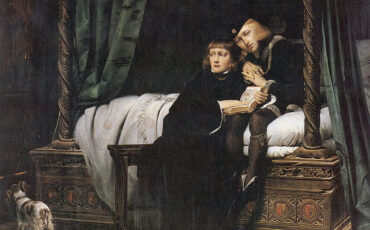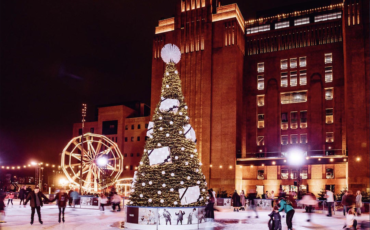Blog
Blog Posts

Abbey Road – Where the Beatles Recorded in London
Although they broke up over fifty years ago, the Beatles remain Britain’s favourite pop group and have now become part of the tourist business in London. The group came from Liverpool and were originally called the Quarrymen after Quarry Bank High School which John Lennon, the group’s founder, attended. Iconic places that the Beatles sang about, such as Penny Lane and Strawberry Fields, are found in Liverpool 200 miles north of the capital.
Read more
Kenwood House: A Stately Home Nestled in Hampstead, London
Just off the road between Hampstead and Highgate, perching resplendently on a ridge that offers a commanding view over inner London’s rooftops and skyscrapers, the Blue Badge tourist guide and his or her clients will find one of London’s ‘hidden gems’: Kenwood House.
Read more
Who Killed the Little Princes in the Tower of London
Yeoman Warders, often referred to as ‘Beefeaters,’ conduct their own tours of the Tower of London. However, they are not allowed to say that Richard III had ordered the killing of his own nephews, who are often referred to as ‘the Little Princes in the Tower.’ This is because the Ricardian Society, who believe Richard was innocent of the crime and had been unjustly accused of it by William Shakespeare and others, dispute this view and will come down on anyone who supports it. This just goes to show how a small but vocal group can exert influence and proclaim the innocence of one who is an obvious villain.
Read more
5 Fun Ideas for New Year in London
The end of December through January is a fun time to be in London. Christmas may have passed, but the atmosphere is still quite festive, and there are loads of events to ring in the New Year and get you excited about the start of the year. Below are some of the major events and activities to entice you to plan a visit to our fair capital London which continues to bounce back with an increasing number of tourists!
Read more
13 London Christmas Markets: Purchase Unique Gifts and Festive Delights
Embrace the joyous spirit of Christmas and discover a treasure trove of unique gifts at London’s enchanting Christmas markets. From the bustling South Bank’s festive market to quaint neighborhood fairs, these eight markets offer an unparalleled Christmas shopping experience. Immerse yourself in the twinkling lights, handcrafted delights, and heartwarming cheer that permeate these seasonal havens.
Read more
William Buckland – The Dinosaur Dean – at Westminster Abbey in London
Working as a Blue Badge Tourist Guide in I often show my guests – especially if they have young children – the bust of the William Buckland in the south aisle of Westminster Abbey. He may hardly be a household name but Buckland is memorialised for his appointment as Dean of the Abbey in 1845 and his work as an early palaeontologist and undergroundologist (geologist). He excelled at two of the new sciences that would enthral Britain in the nineteenth century.
Read more
Ice Skating in London – 4 Open Air Ice Rinks To Enjoy Over The Christmas And New Year
Christmas festivities in Central London usually start with the putting up of Christmas lights in the major shopping areas. But nowadays, the laying out of ice rinks in popular tourist attractions makes the visitor experience much more fun. Here are five places where you can enjoy skating in London with amazing scenic views.
Read more
Guide to Enjoying Christmas & New Year In London
London offers a variety of ways to keep you entertained over the festive season. Here are some of the best tips from Guide London to help you make the most of the capital over Christmas and New Year!
Read more
A Dickens Of A Christmas in London
More than anyone else, Charles Dickens invented the British Christmas with A Christmas Carol, his story about Ebenezer Scrooge and the ghosts of Christmas Past, Present, and Future. It was first published in 1843 and has been adapted for stage and screen many times. No surprise then that there are four museums in the United Kingdom dedicated to Charles Dickens (including one in London), more than any other British writer.
Read more
5 Reasons To Visit London During The Christmas Holidays
Christmas is a magical time of year to be visiting London. There are spectacular decorations everywhere and people are generally in a festive mood. Here are some of our favourite seasonal experiences which are all great reasons to visit London during the Christmas holidays.
Read more
Stand Up For Handel – The Hallelujah Chorus
Christmas is upon us and many people – both locals and visitors – will go either to a church or concert hall to experience a performance of the Messiah written by George Frederick Handel, which is a highlight of the festive season. The Messiah was first performed in Dublin in 1742 and soon came to London.
Read more
Harry Potter’s Importance to Tourism in London and Britain
Blue Badge Tourist Guides in London are used to taking people around places that have been around for a while and are often asked, ’How old is this place?’. Hogwarts School may have existed for some time, but nothing in the Harry Potter series of books and films is over thirty-five years old. Via this blog post, I’ll take a look at some of the places associated with the boy wizard.
Read more


